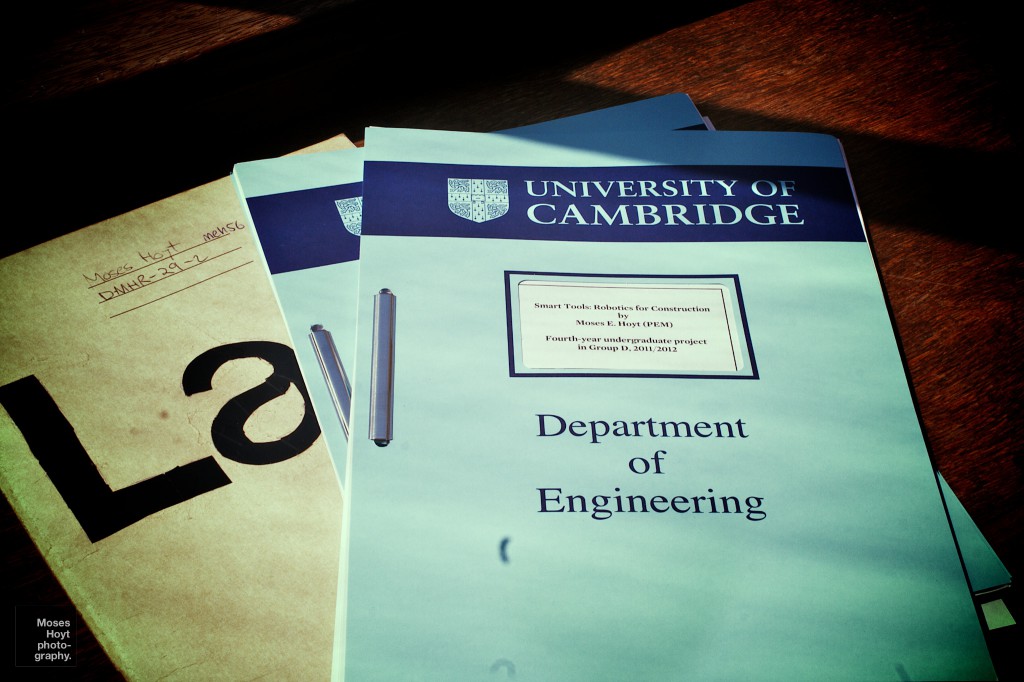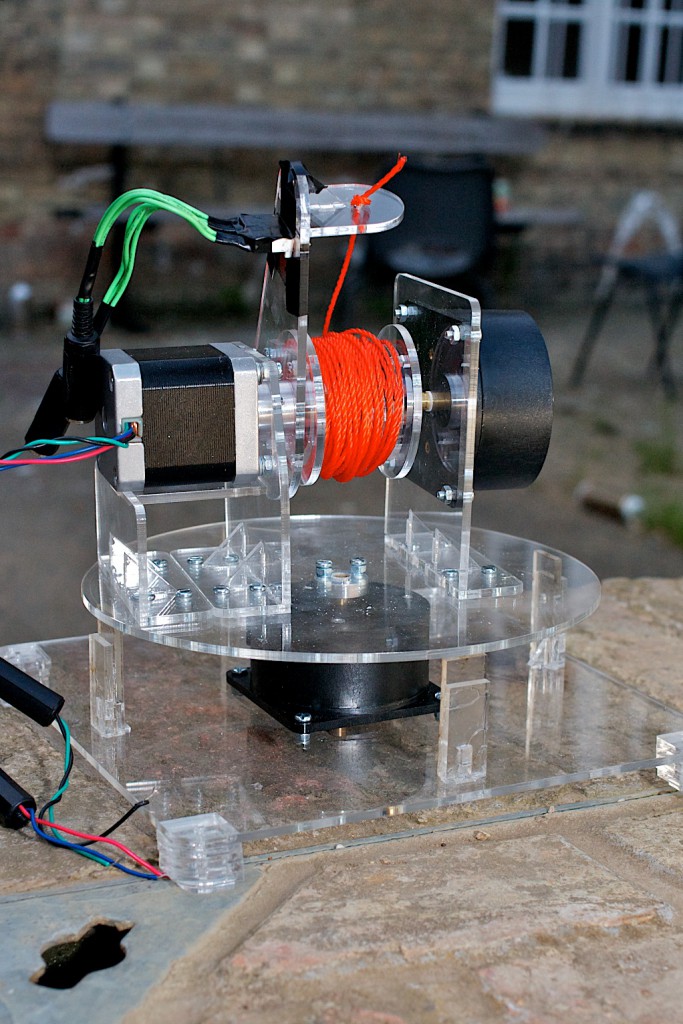 In my last year at Cambridge University I spent about half of my time working on my MEng (Masters of Engineering) project, entitled Smart Tools: Robotics for Construction. I feel it deserves a limited write up here outlining the project’s background, why such a task was undertaken and what potentially are the next steps in this type of construction robotics. My technical abstract is available in pdf at the end of this page, feel free to download it and have a read. Please cite me (and drop me an email) if you intend to use it. For further information, questions and the complete thesis, email me and we can go from there.
In my last year at Cambridge University I spent about half of my time working on my MEng (Masters of Engineering) project, entitled Smart Tools: Robotics for Construction. I feel it deserves a limited write up here outlining the project’s background, why such a task was undertaken and what potentially are the next steps in this type of construction robotics. My technical abstract is available in pdf at the end of this page, feel free to download it and have a read. Please cite me (and drop me an email) if you intend to use it. For further information, questions and the complete thesis, email me and we can go from there.
Smart Tools: Robotics for Construction is a project designed to investigate and implement the integration of CAD software with real time construction tools on a worksite. The aim behind the project is to create a smart tool, i.e. one that is aware of its location and position with respect to its local environment.
 There is a particular emphasis on developing a faster and more efficient method of building vaulted arch structures, such as those built by Rafael Guastavino in the late 19th and early 20th centuries. Traditionally, in the construction of timbrel vaulted arches, non-structural formwork, or guide-work, is used to assist masons in laying tiles in the correct manner. Wooden guides are temporarily constructed in the vaulted space, roughly mapping the general shape required. This guide-work, however, severely limits the working space available under the vault, making the construction difficult and ultimately more time consuming. Skilled Catalan masons required little more than two strings as a guide to accurately trace a vault, but when it comes to more complex degree-of-curvature structures, using two strings becomes obsolete. But, the method does not.
There is a particular emphasis on developing a faster and more efficient method of building vaulted arch structures, such as those built by Rafael Guastavino in the late 19th and early 20th centuries. Traditionally, in the construction of timbrel vaulted arches, non-structural formwork, or guide-work, is used to assist masons in laying tiles in the correct manner. Wooden guides are temporarily constructed in the vaulted space, roughly mapping the general shape required. This guide-work, however, severely limits the working space available under the vault, making the construction difficult and ultimately more time consuming. Skilled Catalan masons required little more than two strings as a guide to accurately trace a vault, but when it comes to more complex degree-of-curvature structures, using two strings becomes obsolete. But, the method does not.
The smart tool that I have created aims to work in the same way that a string attached to a single point traces a hemisphere, except that in this tool, the string’s length changes to reflect the shape of the vault as the string is moved around the space. A model is loaded into a CAD program, and the smart tool uses this as the basis of the vault to trace with the “smart” string.
 This is accomplished through creating a polar coördinate measuring system in the working space so that the position of the end of the string can be determined. The direction that the string is pointing is calculated by an optical rotary encoder and the angle of the string, with respect to the ground plane, is calculated with an accelerometer. The length of the string is calculated through looking at the number of rotations that a string-spool has gone through (this also uses a rotary encoder). These values of direction, elevation and radius allow the position of the end of the string to be expressed in polar coördinates.
This is accomplished through creating a polar coördinate measuring system in the working space so that the position of the end of the string can be determined. The direction that the string is pointing is calculated by an optical rotary encoder and the angle of the string, with respect to the ground plane, is calculated with an accelerometer. The length of the string is calculated through looking at the number of rotations that a string-spool has gone through (this also uses a rotary encoder). These values of direction, elevation and radius allow the position of the end of the string to be expressed in polar coördinates.
The position of the unit and the end of the string can then be compared to the CAD model of the vault, and feedback to the end of the string can be applied if necessary. Feedback is applied through a stepper motor connected to the axle of the spool of string. If the end of the string is coincident with the vaulted arch surface, then feedback is applied to the string, holding it, so that it cannot be extended further. As the end of the string is moved around the vaulted space, it may go inside the vault, in which case the feedback on the string is loosened so that it can extend further. The string may also go outside the vault in which case the motor switches on, shortening the string until its end is within the vaulted surface.
The measuring and feedback platform is based on an Arduino micro-controller that interfaces closely with a CAD system, allowing simultaneous real time two-way communication. The CAD system is based on Rhinoceros, and uses a parametric modeling plugin, Grasshopper, alongside Firefly, a program that allows for the Arduino integration.
Future work could revolve around refinement of the tool, making it more accurate and suitable for use in a construction environment, or additionally through extending the feedback so that it is applied in more than just one axis.
This project would not have been possible without the fantastic help and guidance of my supervisor, Michael Ramage.
A PDF of the technical abstract is available here. For more information on the project, please get in touch.
Leave a comment